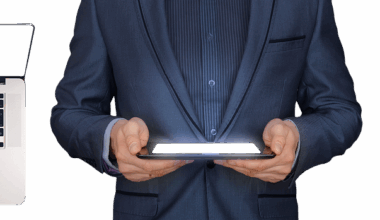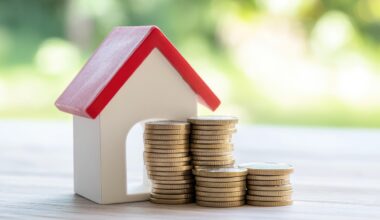Urgency Marketing Strategies That Boost Conversion Rates
In today’s competitive market, implementing effective urgency marketing strategies can significantly drive conversion rates. These techniques tap into consumers’ psychology, creating a sense of immediate action towards purchasing a product or service. By leveraging the urgency effect, marketers can encourage customers to make quicker decisions. Various forms of urgency marketing can be employed, such as time-sensitive promotions, limited-time offers, and countdown timers. Using a clear call-to-action (CTA) that highlights these time constraints can further enhance its effectiveness. Understanding your audience and tailoring urgency strategies to their preferences is critical. Consumers are often motivated by fear of missing out (FOMO), which urgency marketing plays directly into, instilling a sense of need for swift action. This effect can be observed across various industries, from e-commerce to event ticket sales. Employing urgency can lead to a shorter sales cycle, increased conversions, and higher revenue. Considering these factors when developing your marketing campaigns can yield rewarding results. Implementing these strategies allows businesses to maintain relevance and encourage buyers to make decisions that align with promotional timelines.
Creating a compelling false sense of scarcity can push potential customers toward completing a purchase and is essential in urgency marketing. This strategy often entails advertising limited quantities of a product available for purchase at a particular price. By showcasing that only a few items remain in stock, a sense of urgency catalyzes quicker decision-making. For instance, a brand may claim, “Only 3 items left at this price!” Consequently, consumers feel an emotional pull towards acquisition before the offer expires or runs out. Social proof also plays a vital role — real-time notifications showing how many people are currently viewing or purchasing the product can enhance the urgency factor. When potential buyers see others interested in a particular item, they are likely to take action to avoid missing out. Dropshipping and retail brands have successfully employed this tactic to boost their sales significantly. Moreover, combining limited stock with a limited-time offer amplifies the effectiveness of scarcity, capturing consumer attention and pushing them towards a prompt purchase. Emphasizing urgency and scarcity paving the way to maintaining customer engagement and driving sales effectively.
The Role of Countdown Timers in Urgency Marketing
Countdown timers are powerful tools in urgency marketing, having the capacity to create a palpable sense of urgency. Displaying a visual timer on your website or product landing page provides a visual cue that time is running out, instilling anxiety and urgency among potential buyers. Studies have indicated that countdown timers can significantly increase conversion rates by portraying the product or offer’s legitimacy and emphasizing its time-sensitive nature. Implementing timers during promotional activities, such as end-of-season sales or special holiday offers, can enhance their relevance and effectiveness. Additionally, utilizing phrases like ‘offer ends in 24 hours’ alongside visually engaging countdowns further heightens the urgency experience. Marketers can strategically position these timers on landing pages, advertisements, and emails to optimize their impact during peak purchasing times. The more aesthetically pleasing and straightforward the timer is, the better it resonates with consumers. By incorporating countdown timers within your campaigns, you not only amplify urgency but also encourage immediate interaction with your offerings. Providing constant reminders of the fleeting time can be the driving force behind a consumer’s choice to proceed with a purchase.
Another effective urgency marketing technique is the deployment of flash sales. These promotions are time-limited, often lasting only a few hours, and can draw significant attention to a brand or product. The key to successful flash sales lies in their brief duration and the marketing strategies implemented to promote them. Flash sales create excitement and anticipation among consumers while pushing them towards immediate action to secure the deal. It’s vital to communicate the specifics of these flash sales clearly, as consumers must know when they’re happening and how much time they have left to purchase. Utilizing social media, email newsletter campaigns, and website notifications can amplify the reach of your flash sales. Highlighting the discount percentage and emphasizing that the sale is available for a limited time allows consumers to realize the urgency of the situation. As a result, many consumers find themselves compelled to navigate through the purchasing process quickly. Flash sales drive traffic to e-commerce sites and improve customer interaction, offering an exciting experience for buyers and beneficial results for businesses.
Emphasizing Limited Availability
Incorporating messages surrounding limited availability can enhance the urgency behind a marketing campaign, directing consumer attention towards quick decision-making. Phrases such as “limited stock” or “only a few left” serve to alert consumers about the scarcity of a product, compelling them to act swiftly. This technique not only boosts conversions but also fosters a sense of exclusivity and desirability around the product or service. Consumers are more likely to purchase when an item becomes available only for a short time, feeling as though they are part of a select group by completing the transaction. Additionally, segmenting your audience and personalizing scarcity messages for different customer personas can result in even better engagement. By displaying high-demand items strategically and ensuring that the scarcity messaging resonates with your target market, this tactic can drive sales. This method is particularly effective on e-commerce platforms where limited releases are common. As customers witness others purchasing limited products, they become motivated to secure their chances of ownership. Overall, highlighting limited availability within your marketing strategy can yield a significant impact on your conversion rates.
The final strategy that effectively utilizes urgency involves follow-up tactics post-purchase to maintain customer interest and drive additional sales. After completing an initial purchase, it’s vital to engage customers immediately and remind them of the limited-time offers still available. Personalized emails reinforcing purchasing decisions while offering complementary products at a discount can capitalize on the momentum achieved with urgency marketing. Furthermore, reminders to encourage re-ordering frequency can be communicated through various channels. Notifications that remind customers of items they expressed interest in, along with availability messages, create a persistent sense of urgency. Seasonal promotions paired with loyalty discounts can also be effective in encouraging further purchases among existing customers. Leveraging customer feedback and testimonials can assist in creating urgency around newly available or restocked products. Understandably, nurturing existing customers is just as crucial as attracting new ones. By continuously deploying urgency-based strategies post-purchase, businesses can enhance customer retention, increase the lifetime value of clients, and maximize overall conversions. Building a loyal customer base fosters long-term success while maintaining the benefits of urgency in your marketing efforts.
Conclusion: The Power of Urgency in Marketing
Urgency marketing strategies offer a viable method for businesses to enhance conversion rates and engage consumers on multiple levels. By integrating the principles of urgency, scarcity, and real-time promotions, marketers can invoke a psychological response that prompts immediate consumer actions. Techniques like countdown timers, flash sales, and highlighting limited availability are all effective ways to encourage quick decision-making. It’s essential for marketers to craft these strategies while keeping their target audience’s preferences and behaviors in mind. The emotional triggers tied closely to urgency make this approach powerful, providing a competitive edge in crowded marketplaces. Continuous engagement through follow-up communication reinforces urgency while catering to customer interests, maximizing the likelihood of repeat purchases. Overall, adopting urgency marketing can enhance customer experience, promote brand loyalty, and yield increased profitability. Brands that effectively utilize urgency marketing strategies will likely thrive in the ever-evolving landscape of consumer behavior. By implementing these techniques into your overall marketing arsenal, you’ll be positioning your business for greater success and conversion rates.
The realm of urgency marketing strategies is not merely a trend; it’s a powerful approach that, when employed strategically, can yield significant returns. As businesses adapt to digital landscapes, understanding and applying these concepts to create a more engaging and urgency-driven shopping experience is essential for success. The focus on timely offers, scarcity, and continuous engagement will not only lead to improved conversion rates but also foster a loyal customer base that understands the value of acting quickly. The balance of urgency and scarcity, when executed effectively, can severely influence consumer behaviors, changing potential customers into buyers and ensuring sustained business growth. Ultimately, marketers who refine their urgency strategies will be better equipped to navigate the complexities of the modern market while meeting the needs of their audiences.


